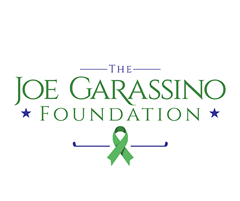What is Cholangiocarcinoma?
Cholangiocarcinoma (or bile duct cancer) arises from the tissues in the bile duct, which is a 4-inch to 5-inch tube that connects the liver and gallbladder to the small intestine. The bile duct allows bile, which is made in the liver and stored in the gallbladder, to flow into the small intestine. Bile is a liquid that helps to both breakdown fats found in foods and helps the body get rid of waste material filtered out of the bloodstream by the liver.
The bile duct originates in the liver. Within the liver, smaller tubes, similar to capillaries, drain bile from the cells in the liver into larger and larger branches, ending in a tube called the common bile duct. Outside of the liver, the bile duct drains into the small intestine. The gallbladder is a reservoir that holds bile until food reaches the intestines. It is attached by a small duct, called the cystic duct, to the common bile ducts about one-third of the way down the bile ducts from the liver. The end of the bile duct empties into the small intestine.
Cancer can occur in any part of the bile duct. The part of the tube that is outside of the liver is called extrahepatic. It is in this portion of the bile duct where cancer usually arises. A perihilar cancer, also called a Klatskin tumor, begins where many small channels join into the bile duct at the point where it leaves the liver. About two-thirds of all cholangiocarcinomas occur here. Distal cholangiocarcinoma occurs at the opposite end of the duct from perihilar cancer, near where the bile duct empties into the small intestine. About one-fourth of all cholangiocarcinomas are distal cholangiocarcinomas. About 5% to 10% of cholangiocarcinomas are intrahepatic, or inside the liver.
Adenocarcinoma is the most common type of extrahepatic cholangiocarcinoma, and accounting for up to 95% of all cholangiocarcinomas. Adenocarcinoma is cancer arising from the mucous glands lining the inside of the bile duct. Cholangiocarcinoma is another term that may be used to describe this type of cancer.
Symptoms
- Chills
- Clay-colored stools
- Fever
- Itching
- Loss of appetite
- Weight loss
- Pain in the upper right abdomen that may radiate to the back
- Yellowing of the skin (jaundice)
Statistics
Primary cholangiocarcinoma is a rare disease. It is estimated that more than 2,500 new cases are diagnosed each year in the United States. However, the incidence of cholangiocarcinoma is increasing, mostly due to rising rates of intrahepatic cholangiocarcinoma that occurs in the liver. The reason for this increase is not known. It may be due to doctors having better tests to diagnose this type of cancer more accurately. Previously, they may have been thought to be a different sort of cancer. In some parts of the world, a parasite called liver flukes can infect the bile duct and cause cancer to form. Liver flukes are very common in Asia and the Middle East, and therefore cholangiocarcinoma is more common in these regions. Gall stones and inflammatory conditions of the gastrointestinal (GI) tract, such as ulcerative colitis or an associated condition called sclerosing cholangitis, increase the risk of cholangiocarcinoma.
The five-year relative survival rate (the percentage of patients who survive at least five years after the cancer is detected, excluding those who die from other diseases) for people diagnosed with early-stage cholangiocarcinoma is about 30%. However, only about 20% of cholangiocarcinoma is found at an early stage. The five-year relative survival rate decreases if cancer has spread at the time of diagnosis.
Cancer survival statistics should be interpreted with caution. These estimates are based on data from thousands of cases of this type of cancer in the United States and may not apply to a single person. It is not possible to tell a person how long he or she will live with cholangiocarcinoma. Because the survival statistics are measured in five-year (or sometimes one-year) intervals, they may not represent advances made in the treatment or diagnosis of this cancer.
For more information, please visit The Cholangiocarcinoma Foundation.


